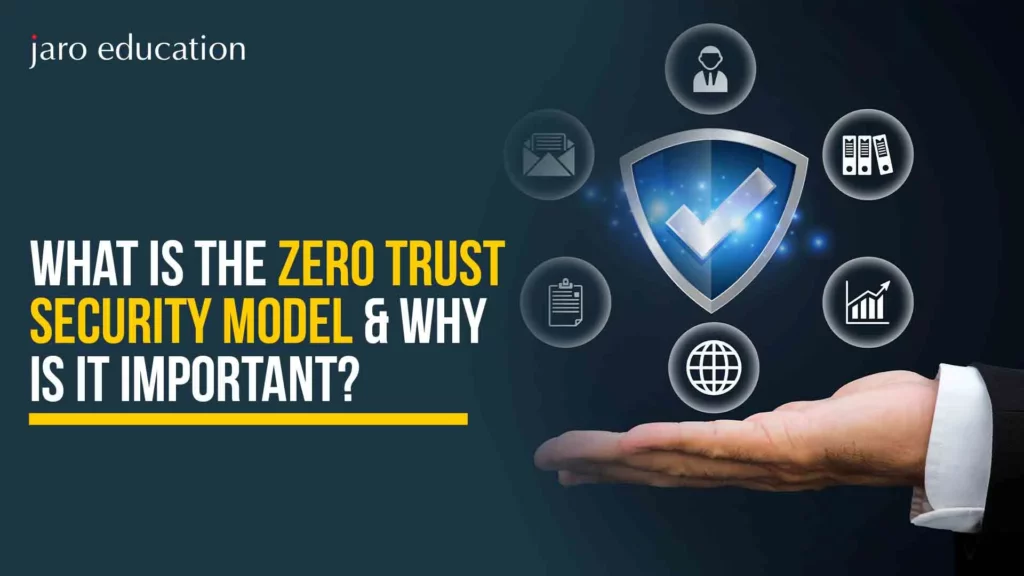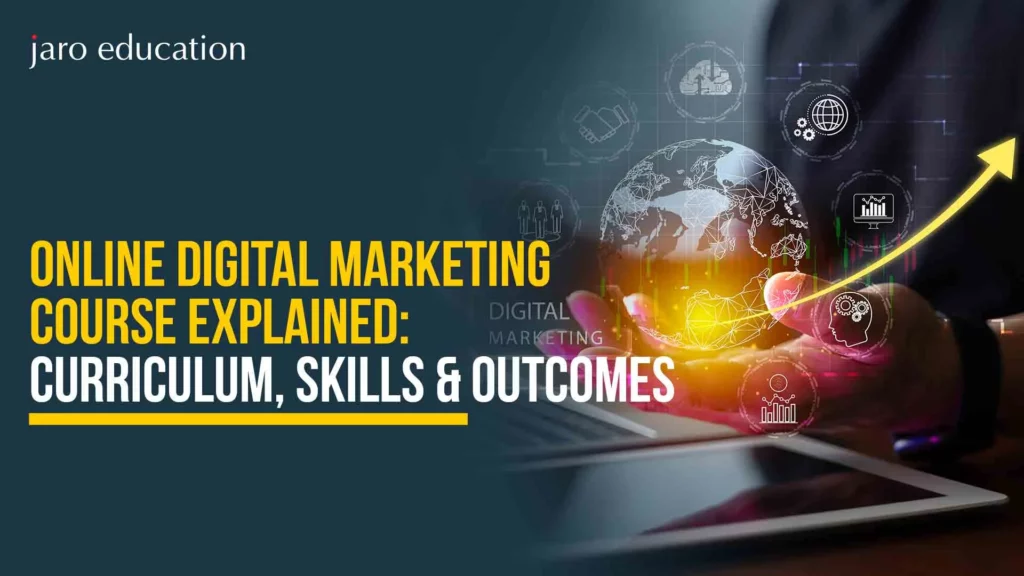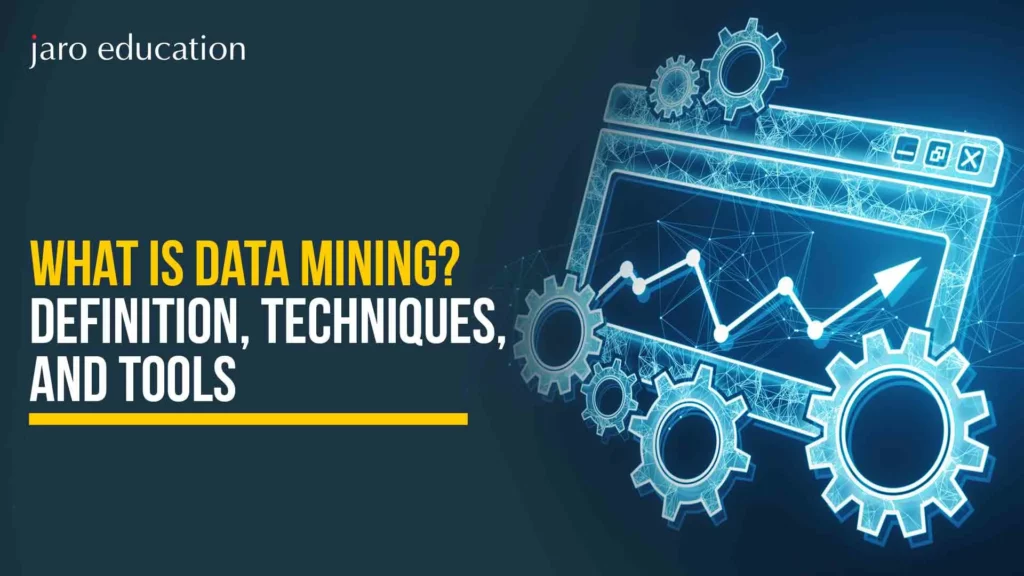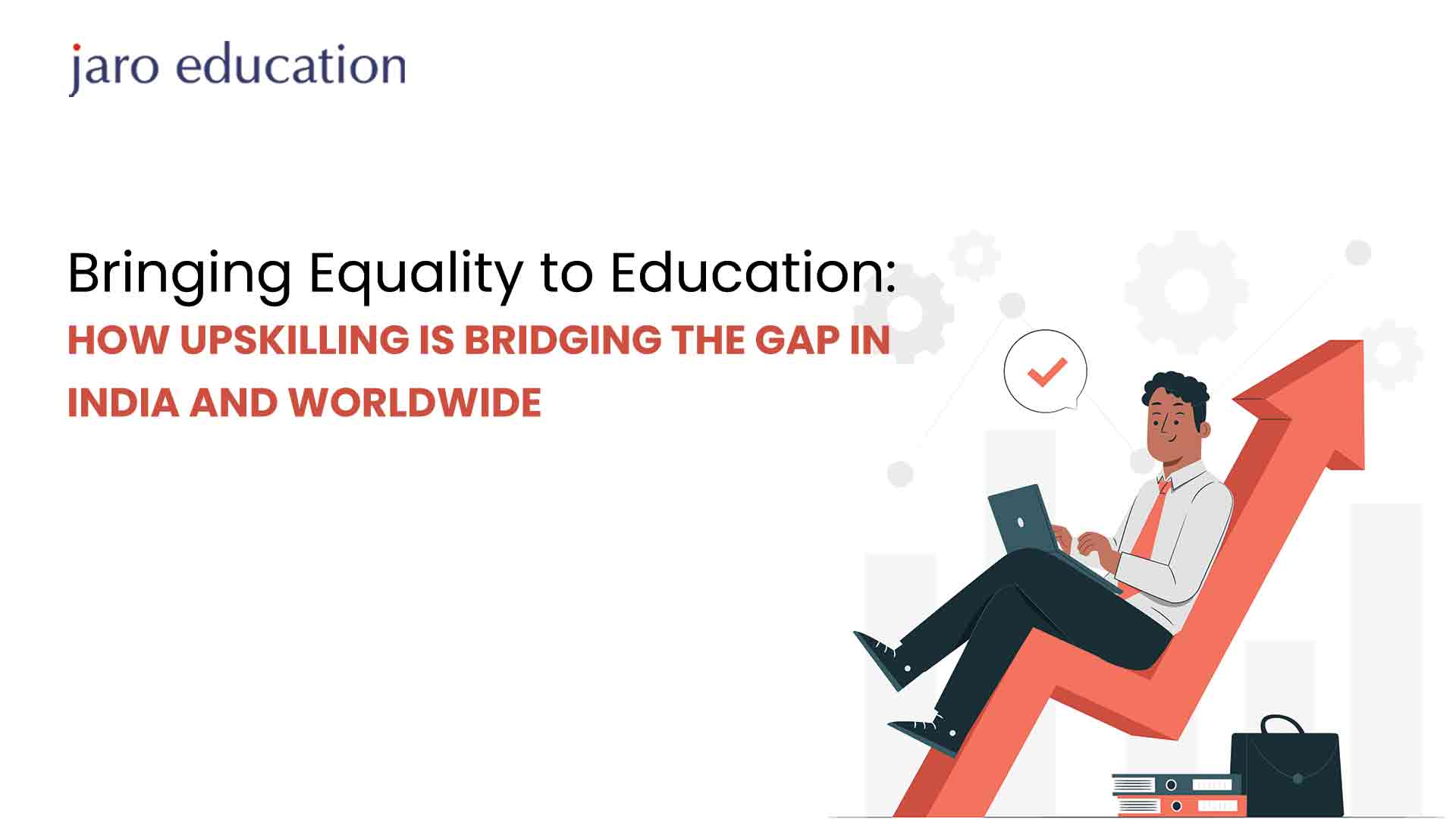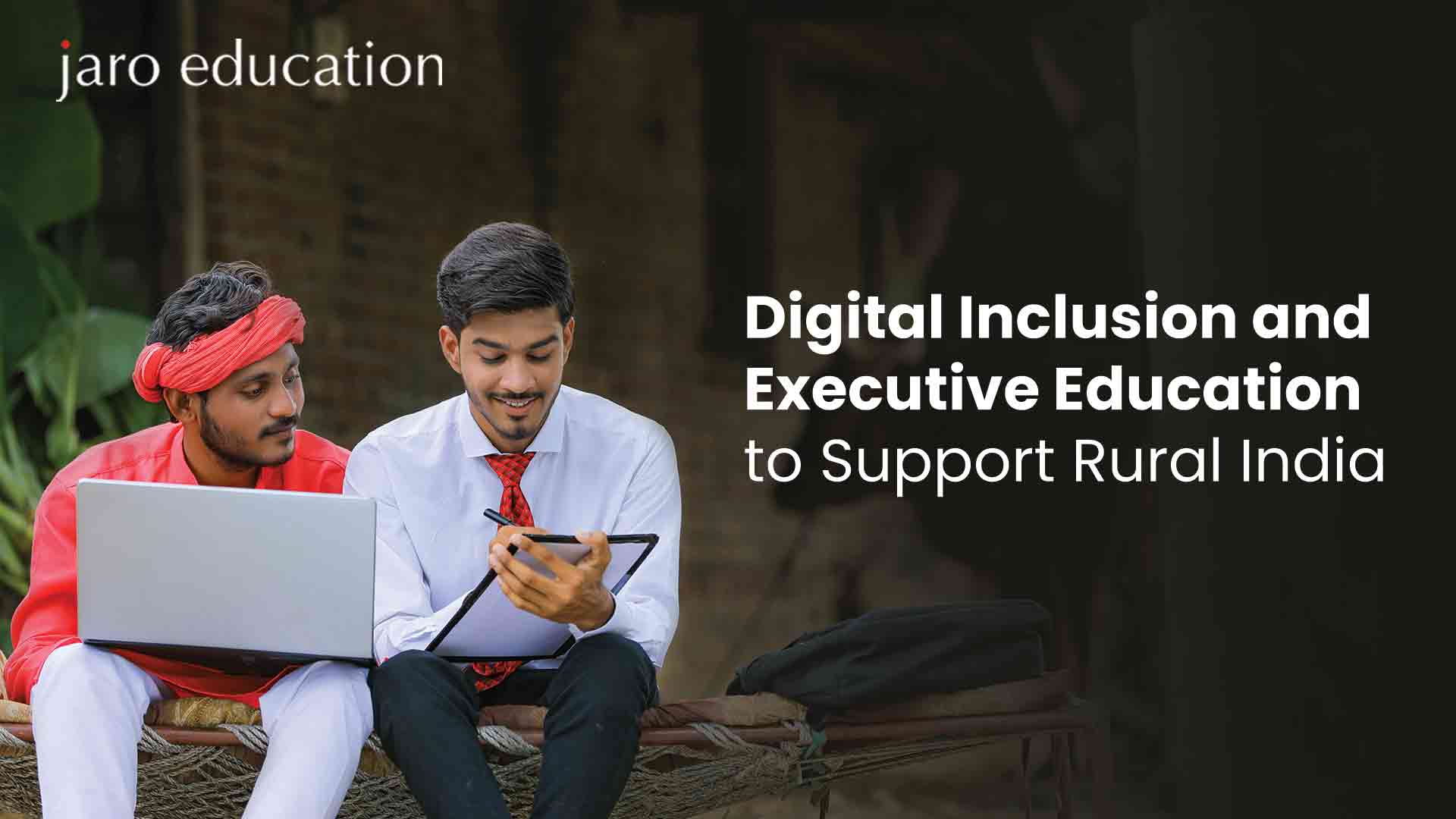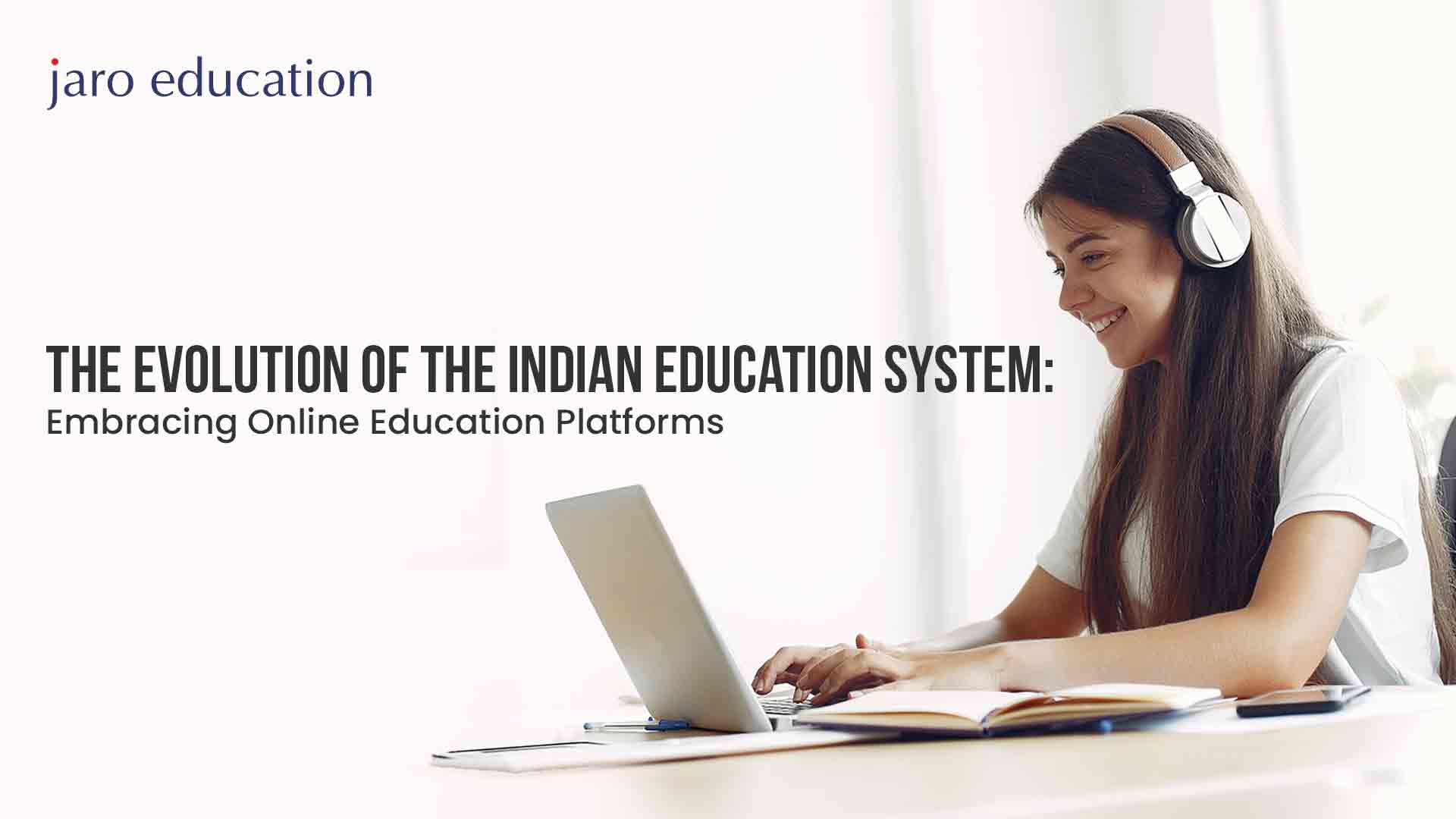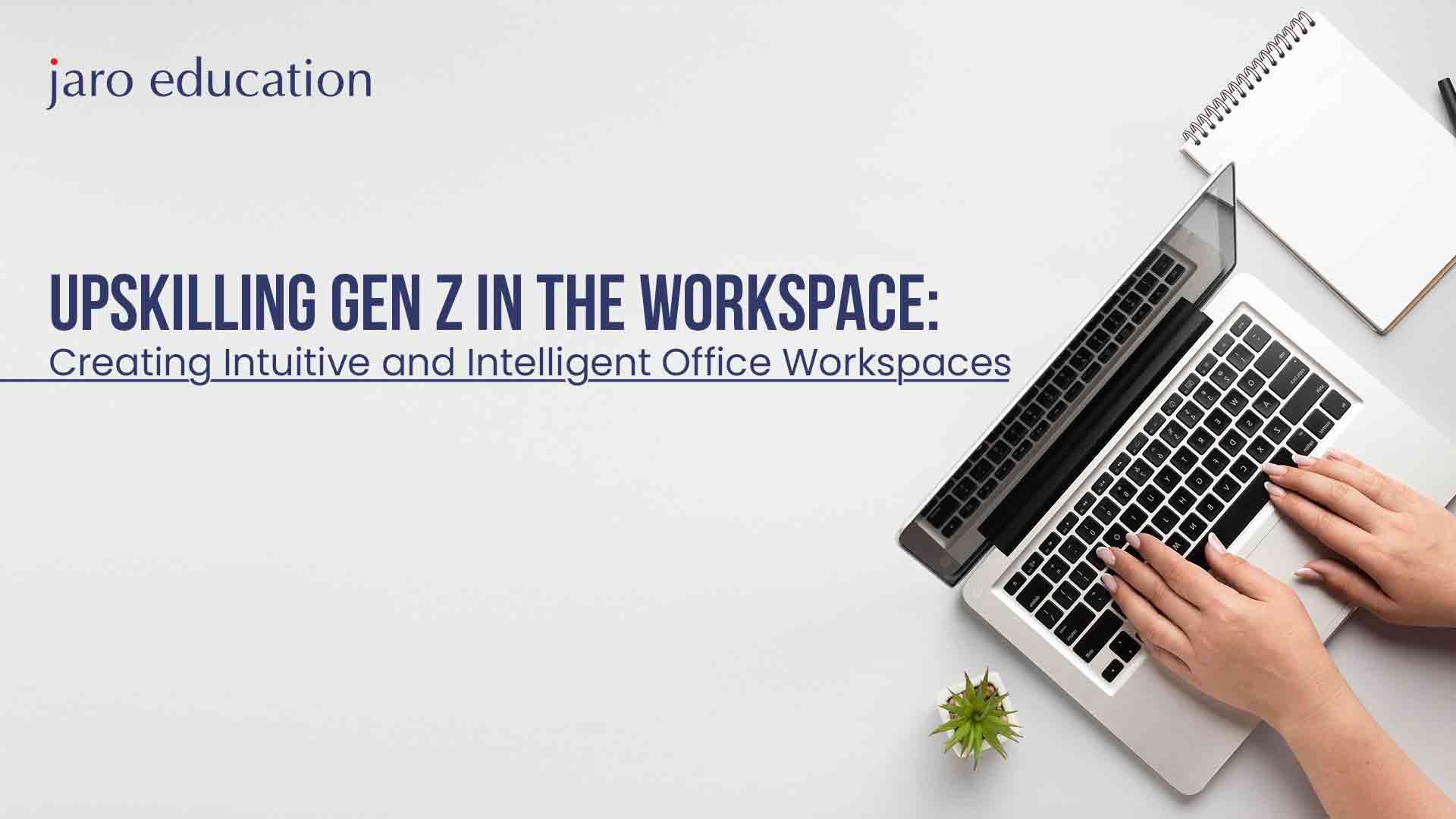The Evolution of Education in India: From Traditional Methods to Blended Learning and the Impact of Educational Technology
Table of Contents
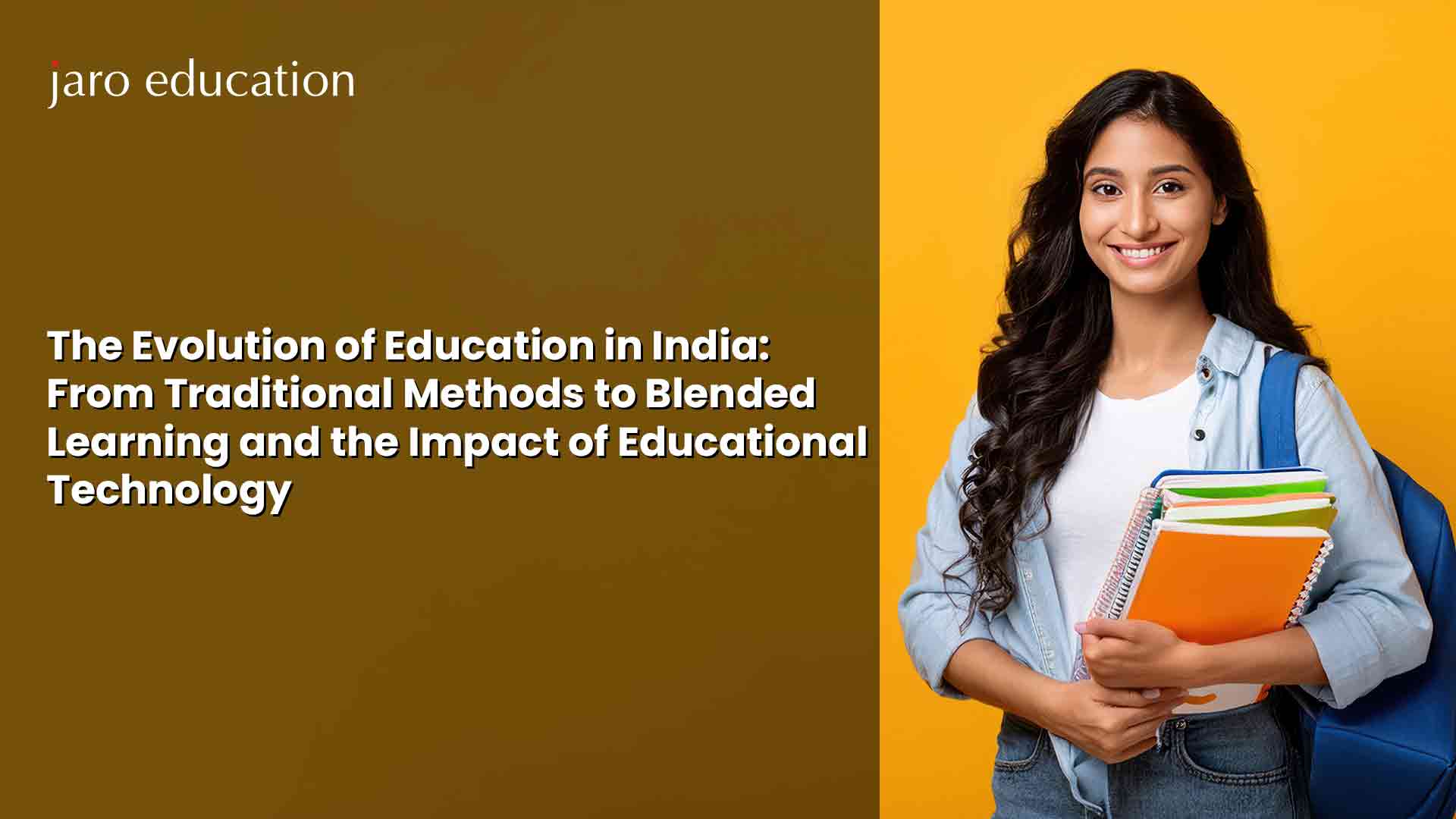
- jaro education
- 15, August 2024
- 10:00 am
Introduction
India’s education system has undergone a profound transformation, reflecting the dynamic shifts in societal values, economic demands, and technological advancements. From the ancient gurukuls where students learned under the tutelage of wise sages to the modern-day digital classrooms, the journey of education in India is a testament to resilience and innovation.
As we celebrate Independence Day, it is an opportune moment to reflect on the progress India has made in the field of education since gaining freedom. Education has played a pivotal role in shaping modern India, driving social change, economic growth, and technological advancement. The strides we have made in educational reform and technology adoption highlight our commitment to empowering every citizen with the tools of knowledge.
This blog traces the evolution of education in India from traditional methods to modern blended learning, with a particular focus on the pivotal role of educational technology. By examining the historical context, post-independence reforms, and the digital revolution, we aim to highlight how educational technology is shaping the future of learning in India.
1. The Traditional Education System in Pre-Independence India
The educational landscape of pre-independence India was rich and diverse, reflecting the country’s cultural heritage and evolving through various historical periods.
Ancient Gurukuls: The Earliest Form of Education in India
The foundation of India’s educational system can be traced back to the ancient gurukuls. These were residential learning institutions where students, known as shishyas, lived with their gurus (teachers) and received education in a wide array of subjects including scriptures, philosophy, literature, warfare, and sciences. The gurukul system emphasized holistic education, personal discipline, and moral values.
Medieval Period: Evolution of Educational Practices
During the medieval period, India saw the introduction of Persian and Islamic educational systems, which brought new dimensions to learning. Madrasas and maktabs emerged as centers of Islamic education, focusing on religious instruction as well as subjects like mathematics, astronomy, and medicine. This period marked a significant diversification in educational content and methodology.
British Colonial Era: Introduction of Western Education
The advent of British colonial rule in India brought a systematic introduction of Western education. The British established schools, colleges, and universities that followed a structured curriculum modeled after the British education system. Institutions like the University of Calcutta, University of Madras, and University of Bombay were founded during this era, laying the groundwork for modern higher education in India. This period also saw the rise of English as a medium of instruction, which continues to influence Indian education today.
Impact on Society
The traditional education systems in India, from gurukuls to colonial schools, played a crucial role in shaping society and culture. They not only provided knowledge and skills but also instilled values and ethical principles. Education was a means to preserve and transmit cultural heritage, social norms, and religious practices. The British era, in particular, set the stage for the modern educational framework, influencing administrative and intellectual developments in the country.
2. Post-Independence Educational Reforms
After gaining independence in 1947, India faced the monumental task of overhauling its education system to meet the needs of a newly sovereign nation. The government initiated various measures to democratize education and make it accessible to all segments of society. The focus was on eradicating illiteracy, expanding educational infrastructure, and promoting scientific and technical education to support nation-building.
Several key policies were introduced to reform and regulate the education sector. The Kothari Commission (1964-66) laid the foundation for the modern education system, advocating for a uniform educational structure and emphasizing the importance of primary education. The National Policy on Education (NPE) of 1968 aimed to promote national integration and cultural preservation through education. The subsequent NPE of 1986, along with its 1992 amendments, focused on inclusive education, women’s education, and vocational training, highlighting the need for equity and excellence in education.
One of the significant achievements post-independence has been the universalization of education. The government launched various initiatives like the Sarva Shiksha Abhiyan (SSA) to ensure that every child receives elementary education. The Right to Education Act (RTE) of 2009 further solidified this commitment by making education a fundamental right for children aged 6 to 14. These efforts have led to substantial increases in enrollment rates and literacy levels across the country, though challenges remain in terms of quality and infrastructure.
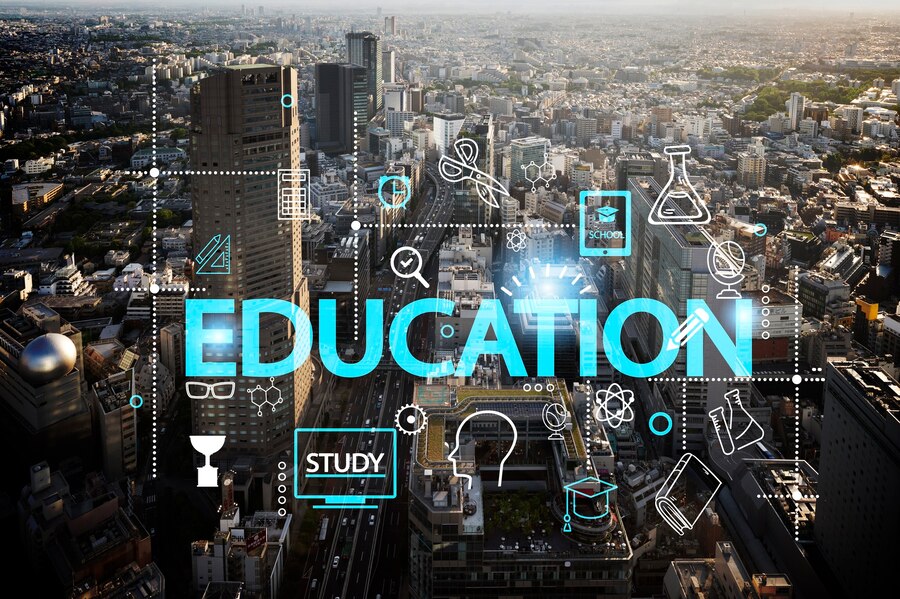
3. The Digital Revolution and the Emergence of Educational Technology
The advent of the digital age has brought about a seismic shift in the Indian education landscape, ushering in an era where technology and learning are inextricably linked.
Introduction of Computers in Education
The initial phase of digital adoption in Indian education began in the late 20th century, with the introduction of computers in schools and colleges. This period marked the beginning of a technological shift, as educational institutions started incorporating computer literacy programs and basic computer science courses into their curricula. Government initiatives like the Computer Literacy and Studies in Schools (CLASS) project played a significant role in this transition, aiming to equip students with essential computer skills and prepare them for the digital age.
Growth of Internet Accessibility
The proliferation of internet access in the early 2000s further revolutionized Indian education. As internet penetration increased, it enabled students and educators to access a vast array of information and resources online. This transformation was accelerated by the advent of affordable smartphones and broadband services, making the internet accessible to even the most remote areas. The availability of online educational content, e-books, and virtual classrooms began to reshape traditional educational practices, fostering a more connected and informed learning environment.
Government Initiatives
Recognizing the potential of digital technology in education, the Indian government launched several initiatives to promote digital literacy and enhance educational infrastructure. Programs like Digital India aimed to bridge the digital divide and ensure that every citizen could benefit from technological advancements. The National Digital Library of India was established to provide students with access to a vast repository of academic resources. Additionally, the SWAYAM (Study Webs of Active Learning for Young Aspiring Minds) platform was introduced to offer free online courses and facilitate self-paced learning, making quality education accessible to all.
4. The Rise of Online Education and Blended Learning
The evolution of educational practices in India reached a pivotal moment with the rise of online education and the integration of blended learning models, transforming how knowledge is imparted and acquired.
Early Online Education Platforms
The rise of online education in India can be attributed to early pioneers like NIIT and Educomp, which laid the groundwork for digital learning. These platforms introduced innovative methods for delivering educational content, utilizing multimedia resources and interactive modules to enhance the learning experience. Over time, numerous other online education providers emerged, offering a wide range of courses and programs catering to diverse learning needs.
COVID-19 Pandemic
The COVID-19 pandemic served as a catalyst for the rapid adoption of online education. With schools and colleges forced to shut down, educational institutions had to pivot to online platforms to continue delivering instruction. This sudden shift highlighted the importance of digital readiness and the need for robust online infrastructure. As a result, both students and educators became more adept at using digital tools, and online education gained widespread acceptance as a viable alternative to traditional classroom learning.
Blended Learning Models
Blended learning, which combines traditional classroom methods with online tools, has emerged as a popular educational model in India. This approach leverages the best of both worlds, offering the flexibility and accessibility of online education along with the structure and social interaction of face-to-face instruction. Blended learning models often incorporate flipped classrooms, where students engage with online content at their own pace and participate in interactive sessions during in-person classes. This hybrid approach has proven effective in enhancing student engagement and improving learning outcomes.
Case Studies
Blended learning, which combines traditional classroom methods with online tools, has emerged as a popular educational model in India. This approach leverages the best of both worlds, offering the flexibility and accessibility of online education along with the structure and social interaction of face-to-face instruction. Blended learning models often incorporate flipped classrooms, where students engage with online content at their own pace and participate in interactive sessions during in-person classes. This hybrid approach has proven effective in enhancing student engagement and improving learning outcomes.
5. The Role of Educational Technology in Modern Education
Educational technology has become a cornerstone of contemporary learning, driving innovation and transforming how education is delivered and experienced in the digital age.
E-Learning Platforms
The proliferation of e-learning platforms has revolutionized modern education in India, offering a diverse range of courses and programs accessible from anywhere. Major educational technology platforms like Jaro Education have significantly impacted how students learn, providing interactive and engaging content that caters to various learning styles. Jaro Education, in particular, has emerged as a leader in executive education and upskilling, partnering with top universities to offer industry-relevant programs. These educational technology platforms have democratized education by making high-quality resources available to a broader audience, breaking geographical and financial barriers.
Interactive Learning Tools
The integration of interactive learning tools, such as augmented reality (AR), virtual reality (VR), gamification, and artificial intelligence (AI), has further enriched the educational technology experience. AR and VR technologies create immersive learning environments that enhance comprehension and retention. Gamification introduces game-like elements into education, making learning fun and motivating for students. AI-driven tools offer personalized learning experiences by adapting content to individual needs and providing real-time feedback, thus improving student performance and engagement.
Benefits of Educational Technology
Educational technology offers numerous benefits that have transformed modern education:
- Accessibility: E-learning platforms and digital resources are accessible to students across different regions, including remote and underserved areas. The online programs offered through Jaro Education’s platform make quality education accessible to working professionals who might not be able to attend traditional classes.
- Personalized Learning: AI and data analytics enable customized learning paths tailored to individual student needs, strengths, and weaknesses.
- Enhanced Engagement: Interactive tools and multimedia content make learning more engaging and enjoyable, fostering a deeper understanding of subjects. Jaro Education’s emphasis on interactive and practical learning ensures that students stay motivated and engaged.
Challenges and Solutions
Despite the advantages, several challenges hinder the widespread adoption of educational technology:
- Digital Divide: Disparities in internet access and digital devices create an uneven playing field for students.
- Infrastructure Issues: Inadequate infrastructure, especially in rural areas, limits the effectiveness of digital education and educational technology. Partnerships between Jaro Education and local institutions can help bridge this gap by providing necessary resources and support.
- Teacher Training: Educators need proper training to effectively integrate and utilize educational technology in their teaching. Jaro Education offers training programs for instructors to ensure they are well-versed in digital tools and methodologies.
Solutions:
- Bridging the Digital Divide: Government and private sector initiatives to provide affordable internet access and digital devices to underserved communities.
- Improving Infrastructure: Investment in digital infrastructure, particularly in rural and remote areas, supported by initiatives from educational technology platforms.
- Professional Development: Comprehensive training programs for teachers to enhance their digital literacy and pedagogical skills, facilitated by top-ranked institutions in association with Jaro Education.
6. Future Trends in Indian Education
As we look towards the horizon, the landscape of Indian education is poised for transformative change, driven by rapid advancements in technology and evolving educational needs.
Emerging Technologies
The future of Indian education will be shaped by emerging technologies such as blockchain, AI, and machine learning. Blockchain can ensure secure and transparent academic records, AI can offer advanced personalized learning experiences, and machine learning can provide predictive analytics to improve educational outcomes.
Future of Online and Blended Learning
The evolution of online and blended learning is expected to continue with the advent of educational technology, with more sophisticated and integrated platforms offering seamless learning experiences. Predictions include:
- Increased Hybrid Models: A greater blend of online and offline learning methods, with platforms like Jaro Education leading the way.
- Adaptive Learning Systems: Enhanced AI-driven platforms that adapt to student performance and learning styles in real-time.
- Global Classrooms: Virtual classrooms that connect students and educators worldwide, fostering international collaboration and cultural exchange. Jaro Education’s global partnerships and international programs exemplify this trend.
Policy Recommendations
To harness the potential of educational technology effectively, the government and educational institutions can take several steps:
- Supportive Policies: Developing policies that promote digital education and provide funding for technological advancements.
- Public-Private Partnerships: Encouraging collaborations between the government, private sector, and educational institutions to enhance digital infrastructure and resources. Jaro Education’s role as a key private-sector player can be instrumental in these partnerships.
- Continuous Monitoring and Evaluation: Regularly assessing the impact of educational technology initiatives and making data-driven improvements, a practice already embraced by Jaro Education.
Impact on Society
The long-term societal benefits of embracing educational technology are profound:
- Enhanced Workforce Readiness: Equipping students with digital skills essential for the modern workforce. Jaro Education’s focus on upskilling and executive education ensures that professionals remain competitive in a rapidly changing job market.
- Reduced Inequality: Bridging educational gaps and providing equal opportunities for all students. Jaro Education’s accessible programs help level the playing field for learners from diverse backgrounds.
- Economic Growth: Fostering a knowledge-driven economy through a well-educated and skilled population. By continually updating their course offerings to meet industry demands, Jaro Education contributes to this economic growth.
7. The Vision for Education in India
As India strides towards becoming a global leader in various sectors, educational technology plays a pivotal role in aligning with national goals. The integration of advanced technology in education supports the country’s vision of creating a knowledge-based economy and a digitally empowered society. Initiatives like the National Education Policy (NEP) 2020 emphasize the importance of technology in enhancing learning outcomes and bridging educational gaps. By leveraging educational technology, India can achieve its goals of universal education, improved quality of learning, and fostering innovation and research.
Education is central to youth empowerment and nation-building. By providing young people with access to quality education and technological tools, we equip them with the skills and knowledge needed to drive societal progress. Educational technology offers personalized learning experiences, making education more relevant and engaging for the younger generation. This empowerment translates into a skilled workforce capable of contributing to various sectors, thus fueling economic growth and strengthening national development.
On Independence Day, we celebrate the remarkable journey of our nation and reflect on the progress made in various domains, including education. The evolution from traditional methods to the integration of educational technology represents a significant milestone in our journey. As we honor the spirit of independence, we envision a bright future for Indian education—one where technology continues to be a catalyst for growth, inclusivity, and excellence. This vision aligns with the values of freedom and opportunity that Independence Day symbolizes, ensuring that education remains a driving force for a prosperous and equitable society.
Conclusion
From the ancient gurukuls to the digital classrooms of today, India’s education system has undergone a profound transformation. The introduction of educational technology has revolutionized learning, offering new opportunities for accessibility, engagement, and personalization. As we trace this evolution, we see how technology has reshaped education and continues to drive progress in aligning with national goals and empowering the youth.
To build on this progress, it is crucial for all stakeholders—government bodies, educational institutions, and private sector players—to continue innovating and investing in educational technology. By fostering collaborations and supporting technological advancements, we can ensure that education remains at the forefront of India’s growth and development.
Education is the cornerstone of India’s growth and development. As we celebrate Independence Day, let us honor the spirit of freedom and progress by embracing educational technology and its potential to transform lives. By investing in education and technology, we contribute to building a brighter, more inclusive future for our nation.
Frequently Asked Questions
Educational technology encompasses a wide range of tools and resources used to enhance teaching and learning processes. It includes digital platforms, software, hardware, and methodologies designed to facilitate education and training. The scope of educational technology is broad, covering areas such as e-learning platforms, interactive tools, virtual classrooms, and educational apps. It aims to improve access to education, personalize learning experiences, and support educators in delivering more effective and engaging instruction.
Technology in education serves multiple purposes, including:
-
-
- Enhancing Learning: Interactive tools and multimedia resources make learning more engaging and effective.
- Personalizing Education: Adaptive learning technologies tailor educational content to individual students’ needs and learning styles.
- Increasing Accessibility: Online platforms and digital resources provide access to education for students in remote or underserved areas.
- Supporting Teachers: Technology assists educators in planning, delivering, and assessing instruction more efficiently.
- Facilitating Collaboration: Digital tools enable students and teachers to collaborate across distances and share resources easily.
-
Educational technology supports remote learning by providing tools and resources that enable students and teachers to connect and interact online. Key components include:
-
-
- Virtual Classrooms: Platforms like Zoom and Google Meet allow for real-time interaction and instruction.
- Online Learning Management Systems (LMS): Systems like Blackboard and Moodle manage course materials, assignments, and assessments.
- Educational Apps and Resources: Apps and websites offer supplementary learning materials and interactive content accessible from any device.
- Communication Tools: Messaging and discussion forums facilitate communication and collaboration between students and educators.
-
No, AI can perform specific tasks in cybersecurity, but it can’t completely replace human input.
To integrate technology effectively, educators can:
-
-
- Choose Appropriate Tools: Select technology that aligns with the learning objectives and enhances the educational experience.
- Provide Training: Participate in professional development to understand how to use and implement technology effectively.
- Incorporate Interactive Elements: Use interactive tools like quizzes, simulations, and multimedia content to engage students.
- Encourage Collaboration: Utilize technology to promote group work and peer interaction.
- Evaluate and Adapt: Continuously assess the effectiveness of technology in achieving learning goals and make adjustments as needed.
-
Emerging trends in educational technology include:
-
-
- Artificial Intelligence (AI): AI is being used for personalized learning experiences, automated grading, and predictive analytics.
- Blockchain: Blockchain technology is being explored for secure record-keeping and credentialing.
- Gamification: The use of game-like elements in education to increase motivation and engagement.
- Adaptive Learning Technologies: Tools that adjust content and assessments based on student performance and learning needs.
- Virtual and Augmented Reality (VR/AR): Technologies that create immersive learning environments and simulations.
-


